Your Cart is Empty
Menu
-
- Shop by Type
- End of Line Sale Items
- New In
- Viking Gifts Under $40
- Hand Forged Axes
- Silver Viking Jewelry
- Stainless Steel Jewelry
- Cremation Jewelry
- Necklaces and Pendants
- Hand Carved Wooden Pendants
- Kings Chains
- Viking Drinking Horns
- Pendant Chains
- Rings
- Bracelets
- Earrings
- Beard Beads and Beard Rings
- Collectables
- Ceramic Mugs
- Street Wear
- Horn Jewelry
- Bronze and Pewter Jewelry
- Shop by Theme
- Viking Axe
- Celtic Jewelry
- Dragon or Serpent
- Viking Raven
- Wolf / Fenrir
- Rune Jewelry
- Odin Jewelry
- Ram / Goat
- Shieldmaidens / Lagertha
- Sword, Spear or Arrow
- Thor's Hammer / Mjolnir
- Tree of Life / Yggdrasil
- Helm of Awe / Aegishjalmur
- Triquetra or Triskelion
- Valknut / Knot of Slain
- Vegvisir / Viking Compass
- Veles / Bear
- Blogs
- Help
-
- Login

Freya

Freya was the most important fertility goddess in Norse mythology. She was also seen as a goddess of love in the erotic sense, and was the most important female deity during the Viking Age,.
In addition to fertility and lovemaking, she was associated with death, war, magic, prophecy and wealth, as well as connections to the Valkyries, for example, it is said that she shared the fallen warriors in battle with Odin, so that half of the dead came to her strongold in Folkvangr, while the other half went to Valhalla.
The Vanir advised seidr and fertility, and since Freya was of Vanir, it was she who taught Odin and the other Aesir seidr magic.
No myths have survived in which Freya is the protagonist, but kennings in poems and myth fragments in other texts are interpreted as evidence that several existed.
She belongs to the family of the Vanir, is the sister of the fertility god Freyr and the daughter of Njord. After the great war between the Aesir and the Vanir, she was exchanged as a hostage, together with Njord and Freyr, and came to live among the Aesir. Her husband is called Odr, but he is described as absent.
In the written traditions Freya is often associated with gold, and she owns the necklace Brísingamen. In Norse culture, wealth and fertility were closely linked, and her delight in gold and jewelry reflected her function as a fertility goddess.
She is also described as the most beautiful of all goddesses, and people prayed to her for happiness and love, for assistance with childbirth, and for a good harvest.
Characteristics
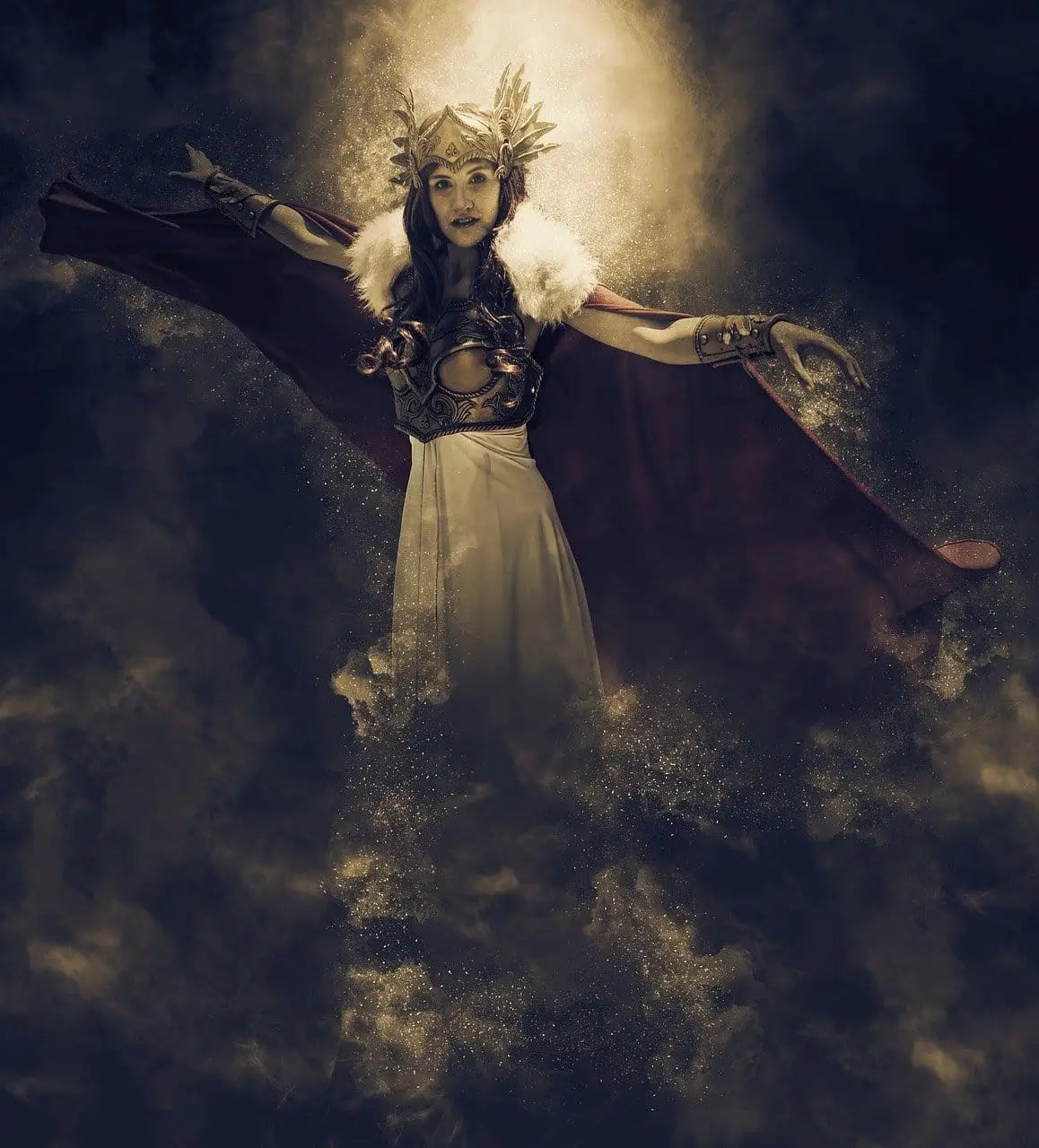
Freya is not the main character in any of the Edda poems, but many poems are related to her. This suggests that the bards knew several now lost myths about her. In addition, fragments of myths have been handed down in other texts.
In Icelandic literature, Freya is primarily associated with fertility, love and lovemaking. Swedish religious scholar Britt-Mari Näsström believes there is a clear link between her and many of the goddesses worshipped in the Indo-European culture, including Durga, Ereshkigal, Sekhmet, Menhit, Bast, Anat, Ashera, Nana, Kybele and Rhea.
Like Freya, these goddesses are followed by cats and associated with war, but above all they are love goddesses. Against this background, Näsström has characterised Freya as ''the Great Goddess of the North''.
Norwegian religious scholar Gro Steinsland, however, believes this comparison is not entirely clear. For although she is often characterised as a fertility goddess, Freya was linked neither to the earth nor to motherhood, Steinsland therefore believes that she was not a Norse parallel to Terra Mater or the Great Mother Goddess.
Freya's cats are mentioned only in a poem fragment by Ulv Uggason, referenced by Snorri Sturluson. Anne Holtsmark believes that it may have been inspired by, for example, the Kybel myth from the Mediterranean, and not an original Norse notion.
Together with Frigg, Freya was the most important goddess in mythology, and in Gylfaginning she is described as being as, or almost as, noble as Frigg, Odin's wife.
In religion, however, Freya was much more important than Frigg, who is a somewhat nebulous figure in the Edda myths. In the Droplaugarsona saga there is a description of a temple in Ölvusvatn, Iceland.
Here Frigg and Freya were placed on high seats opposite Thor and Yngve. These statues were draped and ornamented with gold and silver. Archaeological finds of female figures wearing necklaces are probably representations of Freya.
The marital status of Freya is disputed. It is said that she was married to Odr, but he has since disappeared and Freya is left to mourn the loss. Steinsland has suggested that the absence and missing may be a mythological representation of the changing of the seasons.
Margaret Clunies Ross believes that Odr may be a hypostasis of Odin, etymologically their names are closely related.
Others, however, have linked Odr to other gods, such as Hermod or the Ottar who appears in the poem Hyndlaljód. Both Clunies Ross and Steinsland believe that Freya is linked to Odin not only through Odr, but also through the art of seidr.
From the tales of the war between the Aesir and the Vanir, it appears that Freya was a great master of the art of seidr, and she taught Odin the practices. In this capacity, she may also be identical to Gullveig, who is impaled by the Aesir in The Wave's Divination after she teaches the women of Asgard the art of sealing.
Freya and Odin's joint children, Hnoss and Gersemi, on the other hand, look like literary constructs, probably of Snorri's own invention.
Origin and possible parallels
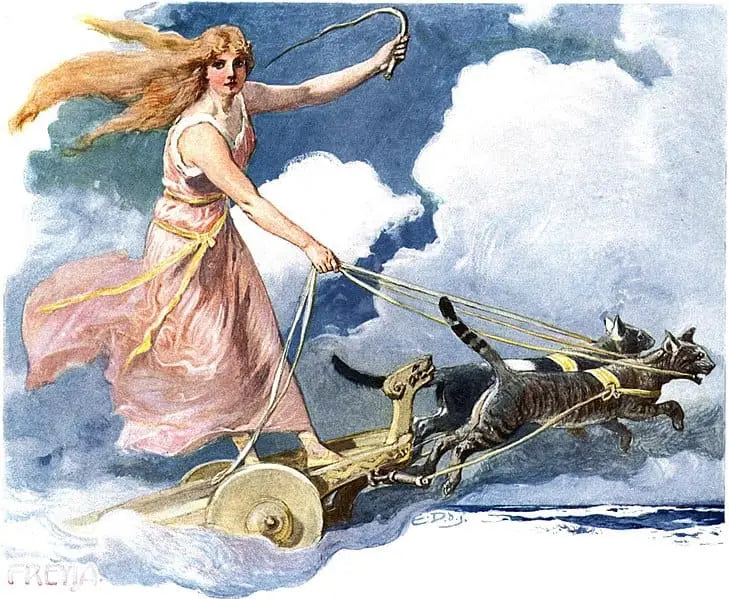
The name Freya comes from an Old Germanic word meaning "the lady". This connection has been linguistically reconstructed on the basis of words in related Germanic languages; in Gothic 'fráujo, Norse frú Old-Hungarian frouwa and Anglo-Saxon frea are known, all words that can be translated into modern Danish with the word frue. The word is a parallel to the Latin term 'domina', which through French dame has later been borrowed into Danish.
It has been suggested that Freya is a direct mythological descendant of the goddess Nerthus. It was a goddess that the Roman writer Tacitus in the 1st century AD linked to several Germanic tribes.
It has been established on the basis of etymological studies that her name is related to the younger Norse deity Njord. Snorre says that Njord had been married to his own sister, and that together they had children Freyr and Freya.
This has led to speculation that this secondary couple, whose names really just mean "Lord" and "Lady", are in fact an emanation of an older pair of fertility gods. Other evidence also points to a connection, such as Freya's chariot, as Tacitus mentions a chariot that was a central element in the worship of Nerthus.
Several South Germanic sources have been interpreted as indicating that the goddesses Frigg and Freya were once the same. A German manuscript from Merseburg, dating from the 9th or 10th century, preserves two spells.
One mentions a figure called Frîia or Frûa, who places a spell on the wounded horse of Baldr and Wodan (Odin). It has been suggested that this figure is identical to the Norse Freya, while others believe it is a South Germanic version of Frigg.
A figure with a similar name, Frea, also appears in the 7th century Origo Gentis Langobardorum. She is described as a goddess of love.
In Historia Langobardorum by Paulus Diaconus, the goddess Freya appears as the wife of Godan (Odin), who in Norse sources is Frigg.
Some of the theories and the common origin of Freya and Frigg are based on linguistic analyses, others on the fact that there are no other known parallels in the southern Germanic area to the Norse Freya.
Others reject this theory on the basis that the two goddesses appear as two clearly distinct figures in the Norse sources.
Attributes
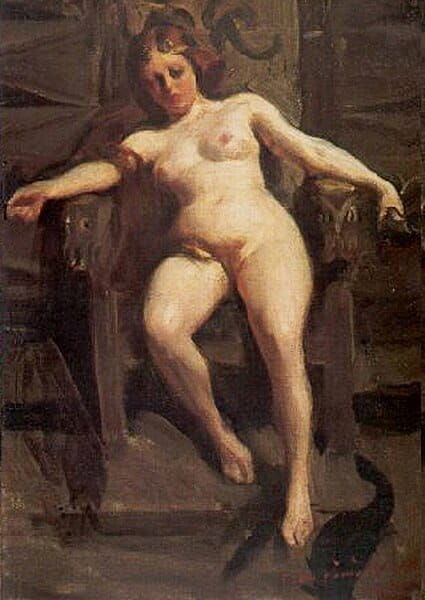
Physical attributes, including possessions and dwellings, were important markers of the characters and roles of the gods. The possessions and objects associated with Freya in the myths helped to define her place in mythology.
Her most important attribute was the golden necklace Brísingamen. The meaning of the name is uncertain, among others it has been suggested that Brisinga means flaming/sparkling, and -men: means necklace.
A necklace probably served as a sign of dignity for women. In Skáldskaparmál it is said that distinguished women often wear stone necklaces to mark their social status, which explains why women in poems can be referred to as jewels or agates.
The Brísingamen was therefore probably a mythological representation of this type of jewelry. In some texts, however, it is Frigg who owns the Brísingamen.
Freya also owns a feather cloak, which enables the wearer to take the form of any bird and fly between the worlds. It was called Valshamr, which translates as "hawk's ham", "falcon's skin". The same magical garb is attributed to Frigg in other tales.
Snorri tells in Heimskringla that Freya often rides in a chariot drawn by large cats, for example, she arrives in it at Baldr's funeral.
It is uncertain, however, whether this description is based on ancient notions, or whether it is the author's own invention inspired by the Kybel myth or other similar goddesses from the Mediterranean.
Later folklore suggests that it was a more widespread notion, for example, Jakob Grimm refers to a tradition of a bride taking good care of the cat before she goes to her wedding so as not to offend the goddess of love.
In the poem Hyndluljóð, Freya uses the boar Hildisvini (Fighting Pig) as a riding animal. Later in the poem, it is revealed that the pig is actually her protégé, Óttar, who has been temporarily transformed to look like a pig.
Myth
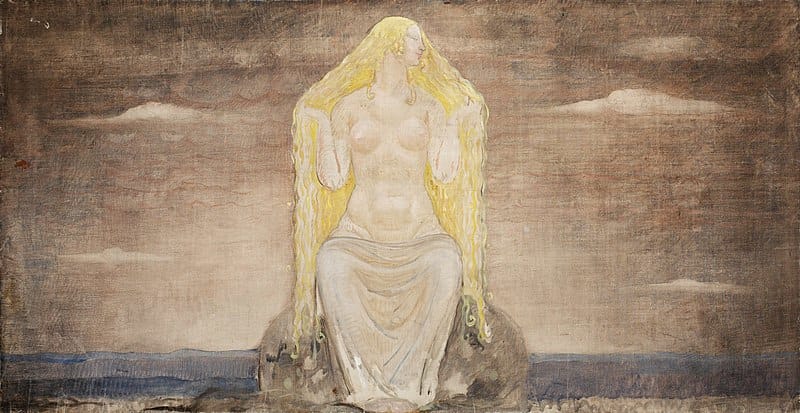
Freya played an important role in the famous myth about the hammer Mjölnir that was stolen by the giant Thrym and asked for Freya's hand as ransom. Freya, however, did not want this and so Thor had to retrieve the Mjölnir himself. Thor, disguised as Freya, went with Loki to the giant.
The giant, of course, was on to this, but still Thor was able to retrieve his hammer and then killed the giant.
Aegir then has to brew the mead and Loki behaves improperly at the feast, arguing with many of the gods and goddesses present. He even mocks Odin about his seidr practice which was mainly associated to women,
Loki insults Frigg and Freya, but he is in awe of Thor. Loki leaves like salmon, but still tells Aegir that his possessions will go up in flames. The Axes are later able to capture Loki and tie him up.
There is also a myth about the giant who built the foundations of Asgard. He is said to have demanded the sun, the moon and the hand of Freya as his wages.
This trio was seen at the time as uniting the forces of light, love and growth. However, due to Loki's cunning, this giant did not get his wall around Asgard finished in time, and thus he did not get his reward.
Loki did this by transforming himself into a mare to distract the horse that carried the giant's belongings. From the communion of the mare (Loki) and the horse, according to the myths, the eight-legged horse of Odin was born: Sleipnir.
Furthermore, there is a myth that explains the seasons. Freya was in fact married to Odr who was very fond of traveling. One day he left his wife and two children to go traveling.
Freya then went looking for Odr and soon autumn came and then winter. Eventually Freya finds Odr again under a laurel tree and together they go back to Asgard. And during the journey back, it soon becomes spring again.
Oral Tradition
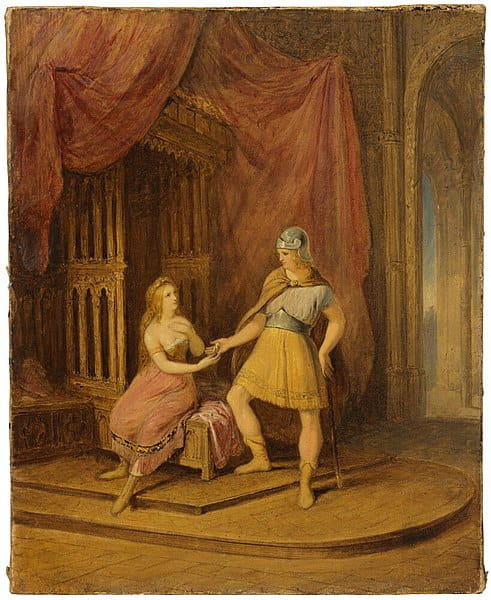
In the rural areas of Scandinavia some dependence on the forces of nature was maintained, fertility gods remained in popular culture until the end of the 19th century in Sweden. Freya retained some elements of her role as a goddess of fertility and crops. In the province of Småland, an account of her relationship to lightning and ripening crops was collected.
In Värend, Freyja could come on Christmas night and bless the apple trees to herald good harvests and consequently people would leave some apples on the trees, for her. Moreover, they considered it dangerous to leave the plows outside, since if Freya sat on one of them, it would be useless.
Modern Culture
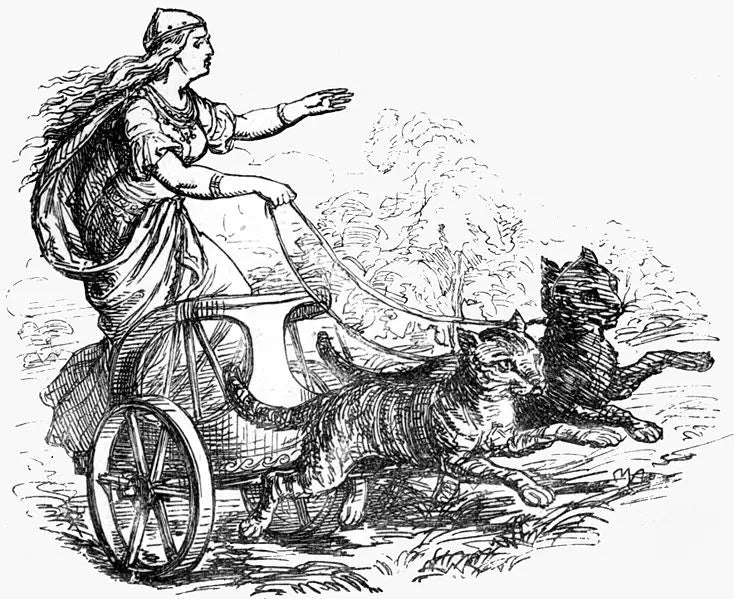
Freya appears as a character in Richard Wagner's opera, The Ring of the Nibelung. In this work, Freya is Frigg's sister, and is the goddess of beauty and guardian of the golden apples.
When she is captured and abducted by the giants Fasolt and Fafnir, the gods quickly lose their youth and grow old and ugly. Odin must therefore pay a large ransom, which included Tarnhelm and the Ring of the Nibelungs.
He had to rob Alberich to get it back. Since then, several portrayals of Freya have been made, based on Wagner's interpretation, though some are closer to the pagan version.
Many farms in Norway bear the word Frøy- as the first element of their names, the most common being in the name Frøyland. It is uncertain whether Frøy- in these names refers to the goddess Freyja or the god Frey.
The first element in the name Frøyjuhof, in the parish of Udenes, is probably the genitive for the name Freyja. The same is the case with Frøyjuhof, in the parishes of Hole and Stjørdal. There are also two islands called Frøya in Norway.
In the parish of Seim, in the province of Hordaland, Norway, there is Ryland farm (Old West Norse Rýgjarland). The first element is the genitive case for rýgr 'lady', identical to the meaning of Freyja's name.
A variant of the word rýgja may occur with the Norwegian municipality of Rygge. There are some places called Horn in Iceland and Hoorn in Holland, another name for the goddess, and in Germany several bear the name Freiburg.
The plant Polygala vulgaris was named in honor of Freyja, as Freyja's Hair, but after the introduction of Christianity its name changed and alluded to the Virgin Mary, thus suggesting its closest counterpart in Christianity.
The name of the day Friday in most Germanic languages, is named after Freya, as for example, Frīatagen High Old German, Freitag in Modern German, Freyjudagr in Old Norse, Vrijdag in Dutch, Fredag in Swedish, Norwegian, and Danish.
In English Friday derives from the Anglo-Saxon word frigedæg, meaning Frige's day, the Anglo-Saxon form for Frigg. Both goddesses were often identified with each other.

